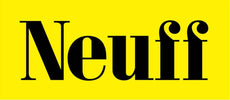
Preparing for Success: Reverse Engineering your Training
BY BEN HAWKES
When you set off somewhere you’ve never been, you wouldn’t want to leave home without looking up where you’re going first. You check your destination, plan a route, and follow it. Similarly, when we look to plan our training, we always want to keep in mind where we’re going.
MAKING A TRAINING PLAN

There are, then, some questions we need to answer - in more detail than you might first think:
- Where do we want to be in 3-4 years?
- What annual progression do we need to see to achieve that?
- With that answer in mind, where *exactly* do we want to be in 9-12 months?
- What does that look like in my context: what behaviours, physical and psychological characteristics, and technical skills need to be evident?
- How can we develop each of these areas?
PHYSICAL DEVELOPMENT IN YOUNG ATHLETES

For the purposes of this article, we’ll now focus on the physical development aspect of this quadrant:
- What biomotor abilities do we need to be able to express to perform in competition? (e.g. maximal strength, rate of force development, co-ordination)
- What adaptations facilitate those abilities? (e.g. increased rate coding and motor unit recruitment, increased tendon stiffness and stretch-shortening cycle function, muscle hypertrophy and architectural changes)
- How can we structure our targeting of these adaptations throughout the training year?
And most importantly...
- How can we best integrate the requisite training to elicit those adaptations within the constraints of a technical development programme, which doesn't negatively affect an athlete's work/education, social life and mental health?
INJURY PREVENTION AND MANAGEMENT

Our first priority with a physical development programme is to reduce our risk of injury, so we need to look at
- The most common injuries in our sport/event and
- Any previous injuries and/or weaknesses or imbalances our athletes have had in the past.
This will inform the bulk of our physical preparation.
Targeting the development of vulnerable areas gives us easy wins and security in the knowledge that we are delivering athletes to track sessions in the most robust condition possible. It’s important to keep that goal in mind; physical preparation work aims to give athletes the tools to train more consistently, at higher volumes and intensities of technical training. It’s a means to an end.
Once we’ve dealt with risk reduction and tolerance work, we can look at adding to the top end. In a similar process to before, we want to look at the low-hanging fruit; what are the limiting factors in our running/jumping/throwing? How could a more physically developed athlete change such a factor, and which biomotor qualities & adaptations are required in which areas to improve it?
Once you’ve got an understanding of what you want to work on, you need to organise these ideas into an annual plan. I use a template like this:
LONG TERM TRAINING PLANS FOR ATHLETES

Clearly, we need an aerobic base and high tissue tolerance levels to achieve the volume of event-specific training necessary for high performance, so we should bias this aspect of training toward the start of the year and microdose it throughout. This is general preparatory work, and we can move toward more specific training later.
Then, we need to consider when, how and where we can get these sessions in. Your answers to these questions will inform your actual programme. This includes equipment, athlete preferences, group dynamics, facility availability, athlete availability, etc.
Once we have answers to these questions, we can then decide on training intensity, frequency, and content.
We hope this helps with fleshing out the bigger picture of physical preparation. If you want to read further, Andy Kay - S&C coach to Jake Wightman - recently wrote a fantastic article about this topic.
ABOUT BEN HAWKES

Ben is a hammer thrower who competes internationally for Great Britain and Northern Ireland and is also a sport massage therapist and strength and conditioning coach.
He has been writing content and producing videos for us for over a year, and his content focuses on hammer throwing tips and strength & conditioning guides for your athletic training!
View his World Athletics profile here.
Instagram: @benhawkes1
Twitter: @ben_hawkes1


Leave a comment